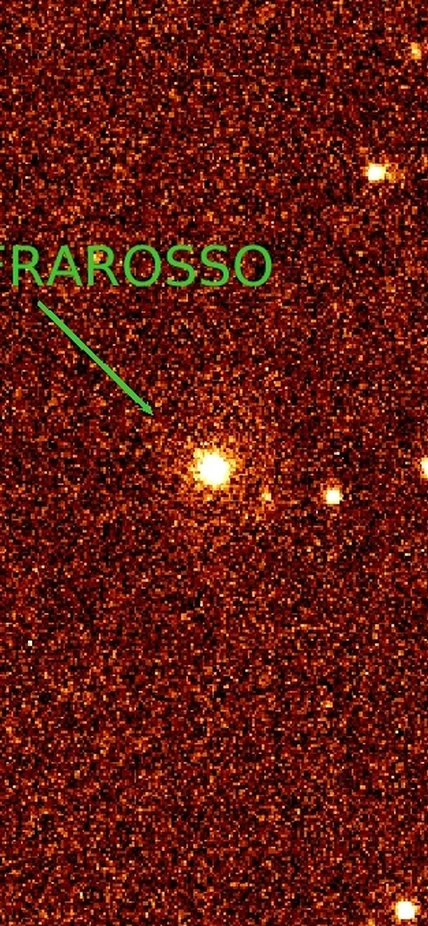SN2015J, a very bright and peculiar supernova, which initially did not have a certain home, now has received its happy ending.
Discovered on April 27, 2015, by the Siding Springs Observatory in Australia, it was classified as a Type IIn supernova, which is a rare category for this class of objects. But, when it was identified, the "address" entry for this source remained empty, since the galaxy where it exploded was nowhere to be found. For this reason, it was labeled as an "orphan" and was added to the group of 5000 currently known such supernovae.
These mystery supernovae could actually have exploded in the middle of nowhere (away from galaxies), originating from massive stars at the end of their life cycle, expelled at great speed from their original formation site. Another possibility would be that their host galaxies are simply too far away or too faint to be observed.
To solve the case of SN2015J, a group of researchersled by Achille Nucita of the University of Salento and with the participation of Vincenzo Testa (INAF-Rome), proposed an observational campaign that used the FORS2 camera mounted on the European Southern Observatory's 8.2 meter Very Large Telescope and the IMACS (optical) and FourStar (near infrared) cameras mounted on the 6.5 meter Magellan telescopes at Carnegie's Las Campanas Observatory.
The data obtained confirmed that SN2015J has indeed a home: it is a very compact and faint galaxy, with an extension of about one-thirtieth of the Milky Way.
“The fact that the phenomenon was particularly interesting is demonstrated by the fact that two important observatories such as ESO-Paranal and Las Campanas have granted us part of their discretionary time on their giant telescopes” Testa said in a translated statement. "Thanks to observations in the optical and near infrared, we were able to identify the host galaxy that is a dwarf galaxy with a faint disk and a brighter core in which the SN2015J explosion occurred. Dwarf galaxies are of particular interest since they are thought to be the basic components forming the largest galaxies. In this particular case, the galaxy is about 30 times smaller than our Milky Way, and supernovae events of this type are therefore much more rare."
Other interesting information about this supernova comes from X-rays observations conducted by space telescopes.
At the time of the explosion, SN2015J was observed with the XRT camera of the Swift satellite. About a year after its first appearance, the same source was identified, through serendipitous observations performed by both Swift and ESA’s XMM-Newton satellites. The excellent features of XMM-Newton made it possible to identify, in just seven seconds (a very short exposure time for Xray observations), the X-ray counterpart of SN2015J which, one year after the explosion, still showed a flux 30 times higher than the initial one. Subsequent observations with the Swift/XRT camera showed that the source is still active in X-rays and is one of the brightest young supernovae ever observed in X-rays.
“It was the X-ray observations that led to the idea that SN2015J was a Type IIn supernova” said first author Nucita in a translated statement. "If this hypothesis were confirmed, it would make SN2015J one of the brightest X-ray events of this type of sources. A further indication would be the fact that at the beginning it seemed to be an orphan event, that is, it happened in the intergalactic space, and not in a host galaxy as usual. However, the light curve does not completely exclude the possibility that it may have been a case of tidal disruption - other similar cases have been observed in the past - and such perspective makes this research even more exciting!”
Top Image Caption: SN2015J as seen in the near infrared by the Magellan Telescopes at Carnegie's Las Campanas Observatory.
___
In translation, courtesy of Italy's National Institute of Astrophysics.
